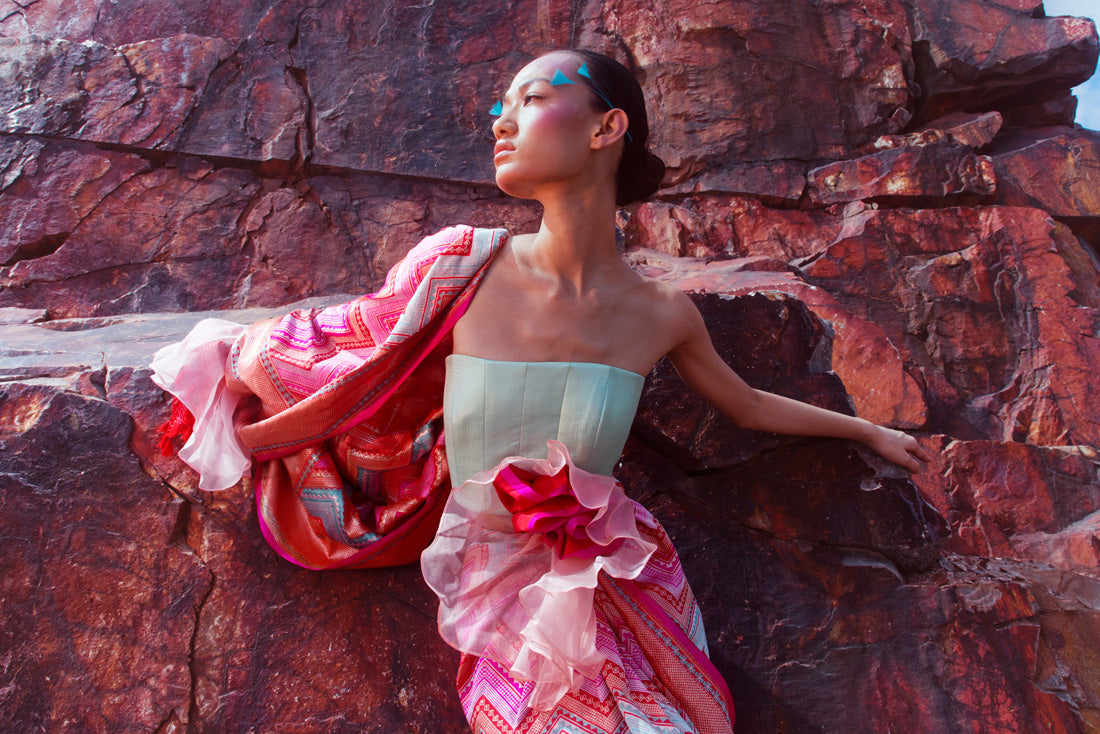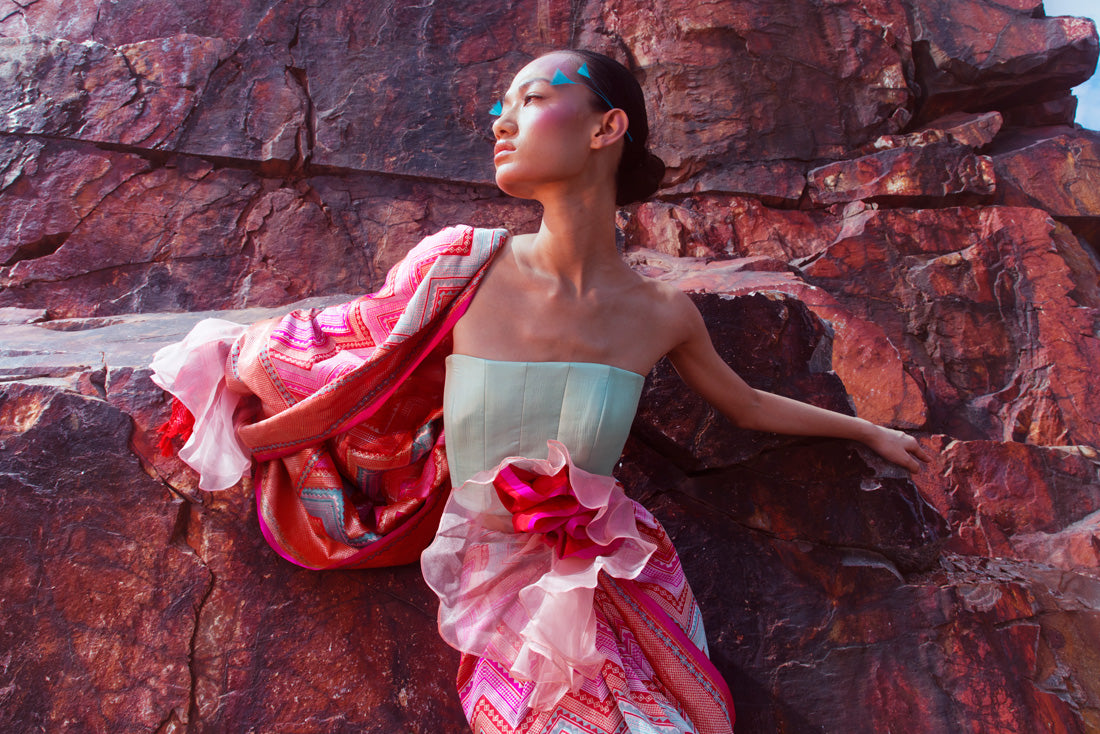Among the myriad garments that encapsulate the essence of a culture, the saree stands out with an ethereal charm. This six to nine yards of woven fabric tells tales of India's colourful heritage and diversified traditions. Whether you're enamoured by the sheer beauty of an organza saree or captivated by the intricate weave of a Banarasi saree, there's no denying the allure of this timeless attire. From its earliest incarnations to its modern-day glamour, the saree's journey is one of remarkable evolution.
The Timeless Appeal of Sarees
Sarees have an ageless charm. Each style, whether it's an organza saree shimmering delicately in daylight, a royal Banarasi saree reflecting years of artisanal expertise, or a luxurious silk saree displaying sheer opulence, serves a unique purpose and occasion. The diversity of the saree for women makes it a beloved choice across generations. From traditional rituals to contemporary parties, the saree has secured its place in the heart of Indian fashion.
The Rich History of Sarees
The saree's history is as rich and varied as its patterns. Delving into the past, one finds references to saree-like garments in ancient Indian scriptures. The opulent silk saree, known to many as the epitome of luxury, speaks of ancient trade relations between India and the world. Meanwhile, the black saree, once associated with periods of mourning, has transformed into a symbol of sophistication and power in contemporary fashion circles.
Traditional Saree Styles
India, with its vast cultural diversity, offers a plethora of saree styles. The South boasts of the Kanjivaram saree, which is a magnificent concoction of pure silk, gold threads, and vibrant hues. In sharp contrast, the Banarasi saree from the North showcases Mughal-inspired designs intricately woven into its fabric, often making it a favourite for weddings.
While the organza saree, traditionally crafted in the southern regions, is celebrated for its feather-light quality, the silk saree is revered countrywide for its luxurious feel. And let's not forget the powerful allure of a classic black saree, symbolic in many regions but universally acknowledged as an epitome of grace.
Contemporary Saree Trends
While the traditional roots of the saree remain intact, contemporary adaptations are endless. Today, designer sarees amalgamate age-old techniques with modern styles. An organza saree might be embroidered with contemporary patterns, while a Kanjivaram saree might showcase pop culture references. The black saree, once simplistic, now often features modern embellishments, making it a go-to choice for red carpet events.
The global appeal of sarees is undeniable. Today, the saree for women is not just limited to Indian shores. International celebrities have embraced the allure of the designer saree, and fusion fashion has given birth to saree gowns, saree jumpsuits, and much more. Banarasi sarees have been creatively incorporated into Western attire, and the organza saree's lightness makes it perfect for innovative draping techniques.
The saree is a true reflection of India's journey from tradition to modernity. Every silk saree carries with it ancient tales, every organza saree highlights the craftsmanship of weavers, every designer saree showcases contemporary creativity, and every Kanjivaram saree emphasises the empowerment of the wearer.
Conclusion
In essence, the saree for women is more than just a garment. It's an ever-evolving tapestry of history, culture, and fashion. With each drape and fold, the saree continues to enchant, ensuring its place in the annals of global fashion.


